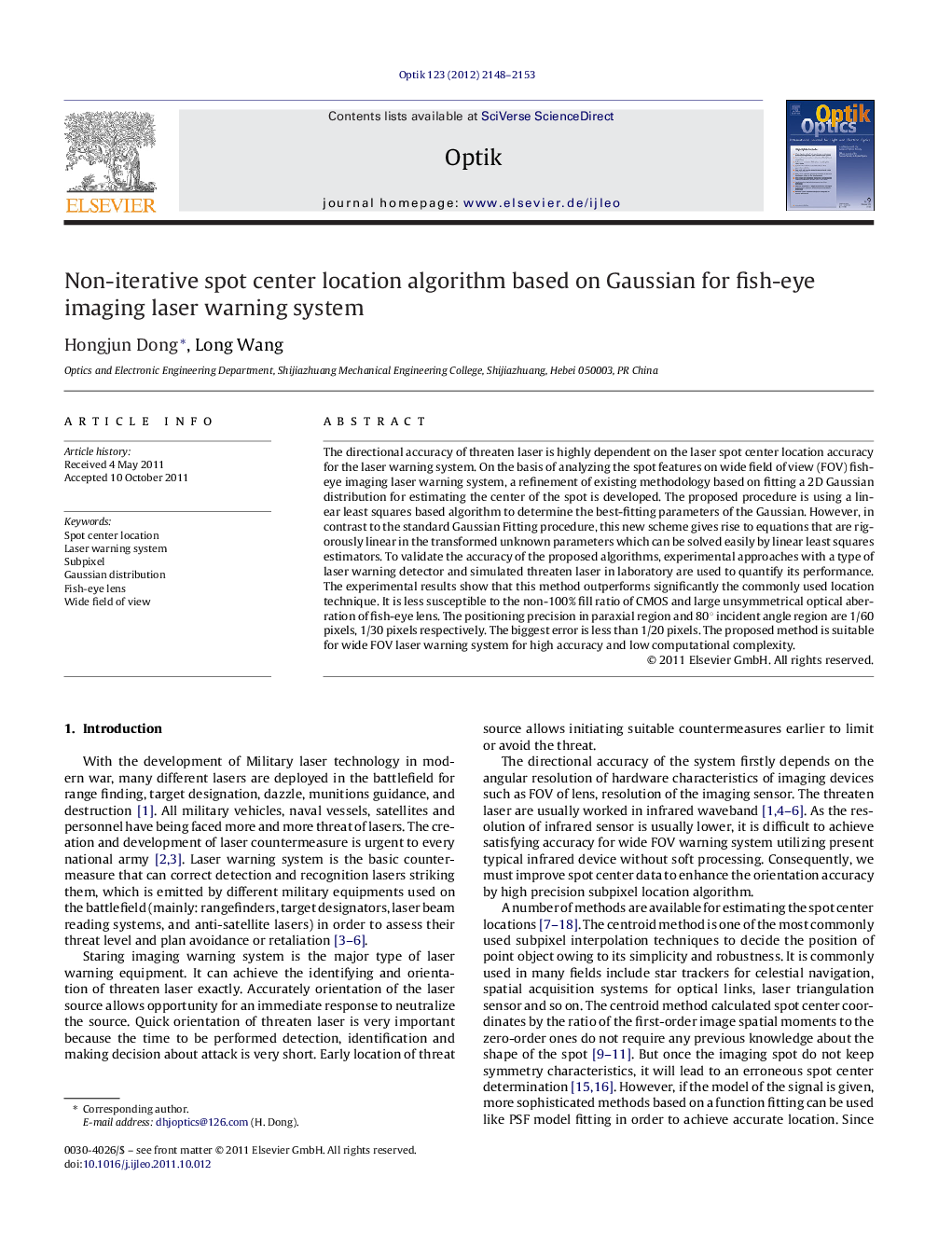| Article ID | Journal | Published Year | Pages | File Type |
|---|---|---|---|---|
| 851083 | Optik - International Journal for Light and Electron Optics | 2012 | 6 Pages |
The directional accuracy of threaten laser is highly dependent on the laser spot center location accuracy for the laser warning system. On the basis of analyzing the spot features on wide field of view (FOV) fish-eye imaging laser warning system, a refinement of existing methodology based on fitting a 2D Gaussian distribution for estimating the center of the spot is developed. The proposed procedure is using a linear least squares based algorithm to determine the best-fitting parameters of the Gaussian. However, in contrast to the standard Gaussian Fitting procedure, this new scheme gives rise to equations that are rigorously linear in the transformed unknown parameters which can be solved easily by linear least squares estimators. To validate the accuracy of the proposed algorithms, experimental approaches with a type of laser warning detector and simulated threaten laser in laboratory are used to quantify its performance. The experimental results show that this method outperforms significantly the commonly used location technique. It is less susceptible to the non-100% fill ratio of CMOS and large unsymmetrical optical aberration of fish-eye lens. The positioning precision in paraxial region and 80° incident angle region are 1/60 pixels, 1/30 pixels respectively. The biggest error is less than 1/20 pixels. The proposed method is suitable for wide FOV laser warning system for high accuracy and low computational complexity.
